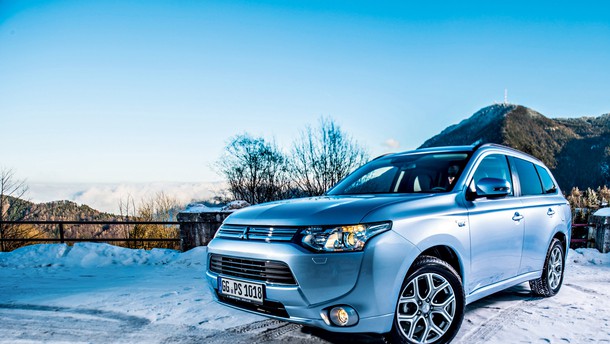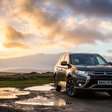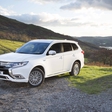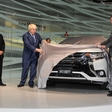
It's an off‑road vehicle that has been rather successful for Mitsubishi. Indeed, the Outlander PHEV was quite a surprise. It is suitable for people who drive about 50 kilometers a day, and don't want to give up anything that makes cars so popular: space, appearance and comfort. Nor the four‑wheel drive, if you need it!

The Outlander PHEV has all of the above, though its appearance may not impress everyone. In terms of design, it is quite ordinary. Our test drive car, which was grey, might be crowned the king of ordinary. But it is an off‑road vehicle, and its size makes it the right mode of transport for you to feel good while you're driving. You will also be able to put in it everything you need for a weekend party. Then, just when you think you've got it figured out, the Outlander PHEV changes completely – an electric car becomes a car with extended range provided by a gas‑powered engine.

Technically speaking, the Outlander PHEV is a genuine amphibian. Its all‑electric range is about 50 kilometers, which makes it especially interesting for people who cover this distance in their commute to work, and where they have the opportunity (during the day) to recharge it. It operates then as an electric car, and you can enjoy all the advantages of this drive. The car is also a hybrid; it even has two hybrid modes – serial and parallel. In the serial hybrid mode, the gas‑powered engine acts only as a generator, and charges the batteries. In the parallel hybrid mode, when the car reaches its top speeds, the motor is integrated directly in the front wheel drive. You can hardly feel the driving modes being switched – everything runs automatically. But drivers can override the operation. When the battery is almost empty, you can press a button that turns on the gas‑powered engine, which recharges the battery, and use the electric mode again at the end of the trip, if you like.

The Outlander PHEV can operate in various driving modes, which mainly depend on the battery charge. In the all‑electric mode, it can reach 120 km/h.
Only the electric motor for the front wheels normally runs in the Outlander (on its own, or in combination with the gas‑powered engine). The four‑wheel drive (an additional drive to the rear wheels) is ensured by the electric motor for the rear wheels, while there is no mechanical connection with the Cardan shaft. Mitsubishi's electronic support system (the S‑AWC) provides suitable automatic control. Drivers can override it simply by pressing the "lock" button, which locks the four‑wheel drive – when driving in snow, or wherever else you desire.

The Mitsubishi Outlander PHEV is a plug‑in hybrid, which means that it has a connection for battery charging—actually it has two. One connection is used with a regular electricity grid, and so takes longer to charge (from three to five and a half hours) than if it is connected to the fast charging system via the CHAdeMO connection, which takes 30 to 40 minutes.
The sensation when driving is actually very similar to the feeling in most electric cars, which is to say that the car seems somewhat heavier than normal vehicles. The automatic gearbox knob only has one choice (forward or reverse), while drivers can determine the power or efficiency of the regenerative battery charging during braking with steering wheel-mounted controls. The electric power steering offers good support, but not direct contact, which would've been nice, as it would enable drivers to have a better feel for what happens with the car when cornering. We would want a slightly more comfortable suspension for poorly‑maintained roads, and the leather seats are only halfway to genuine comfort. People who would like more information on the operation of the drive will be satisfied by the infotainment system, and will be able to monitor operations (history, economy and similar) on a central display.

So why did the Outlander PHEV become the third-best-selling electric car in the world, and the best-selling plug‑in hybrid in 2014? In some markets, it was particularly sought‑after due to regulations which made it a friendly and interesting purchase, in terms of taxes. In the end, we can say that this car is definitely a good choice for a regular buyer whose needs are modest and commuter-driven.



